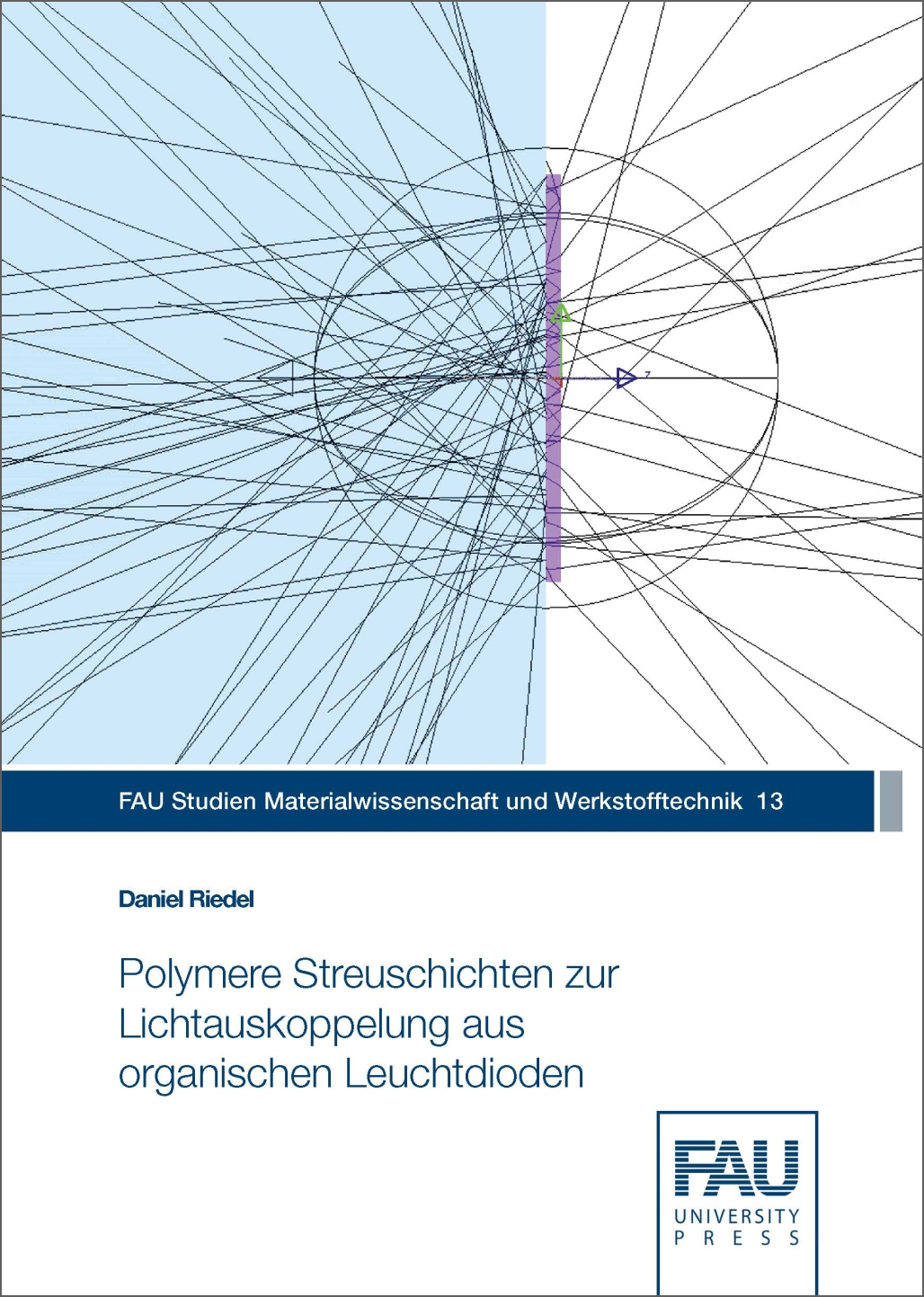Description
This work investigates a light extraction technique based on volumetric scattering layers to enhance device efficiency. The focus is on low-cost polymeric materials used as high-refractive-index scattering layers coupled to the organic layers where light emission takes place. The scattering layers were manufactured, optimized, analyzed and simulated. Fabricated OLED devices incorporating polymeric scattering layers for light extraction proved the applicability of this method for enhancing the efficiency for an industrial application.
Besides experimental results, a hybrid wave- and ray-optical simulation method was developed to gain a full understanding of OLED devices with internal scattering layers. Experimentally and in the simulations we found an ideal haze of the scattering layers in a range of 0.75 -0.95, yielding a maximum theoretical efficiency enhancement of a factor of ~2. In experiments, a somewhat lower gain of 1.5 could be realized due to absorption losses within the scattering layer. The developed theoretical understanding allowed to derive that the effective reflectivity of the OLED stack has a high impact on the total amount of extracted light. The effective reflectivity sums up all absorption and reflection losses within the organic multilayer stack and the reflective electrode in one consolidated optical value. A key finding is, that a reduction of absorption losses has an enormous influence on enhancing total power efficiency of OLED devices. A typical value of an effective OLED reflectivity is around 80%, resulting in a simulated maximum outcoupling efficiency of 55%.


Reviews
There are no reviews yet.